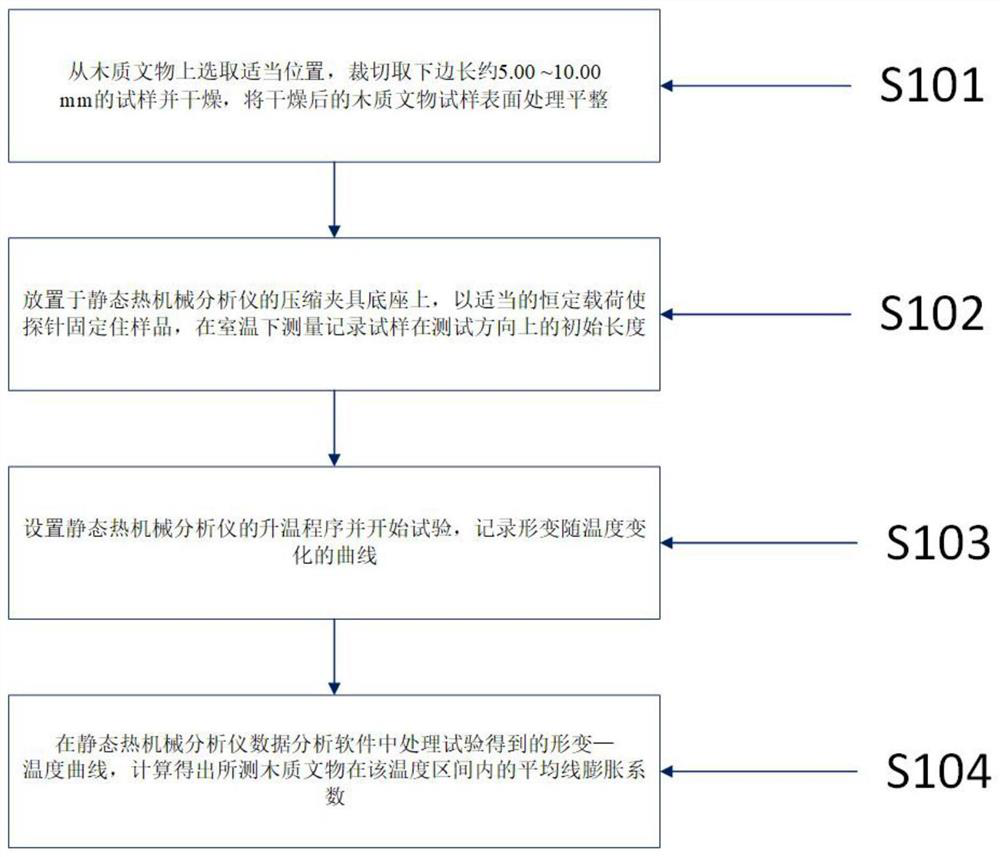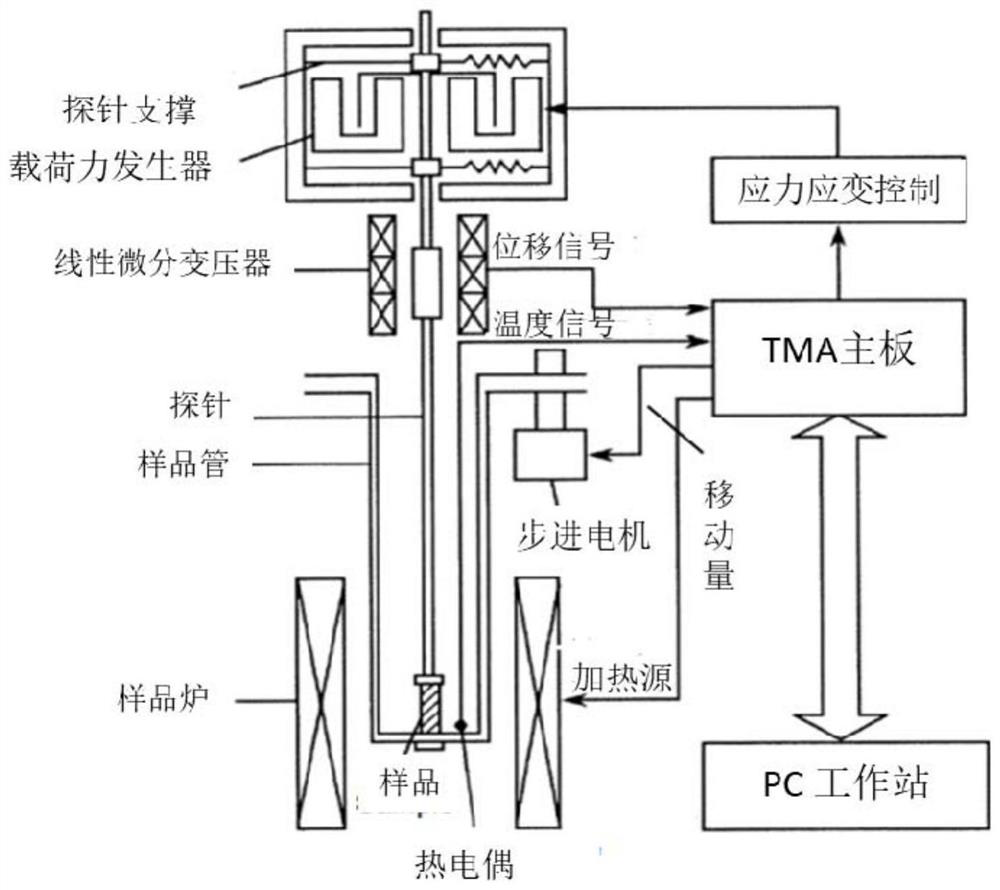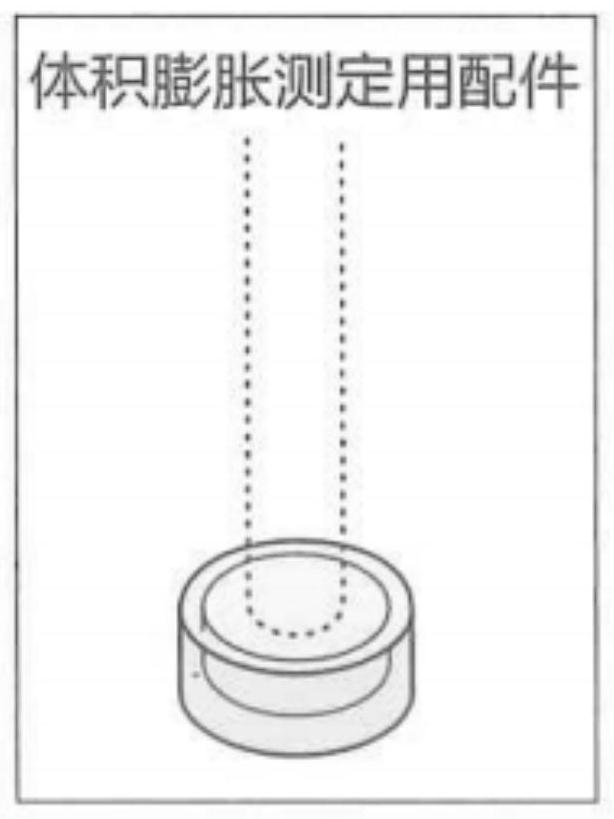Method and system for testing linear expansion coefficient of wooden cultural relics with static thermomechanical analyzer
A technology of thermomechanical analyzer and expansion coefficient, applied in the field of analysis and testing, to achieve the effects of high data accuracy, good repeatability, and high displacement sensitivity
- Summary
- Abstract
- Description
- Claims
- Application Information
AI Technical Summary
Problems solved by technology
Method used
Image
Examples
Embodiment 1
[0052] The average linear expansion coefficient of the "Nanhai No. 1" shipwreck slab sample at -10°C to 50°C was tested by the thermomechanical analysis method described in the present invention. It was identified that the wood species was hardwood pine, which was severely degraded and had a maximum moisture content. is 242.77%. The sample was cut into small cuboid test pieces, and the initial lengths measured in the axial direction, radial direction and chord direction were 4.141mm, 4.605mm and 6.722mm respectively after drying and grinding. like Figure 2-3 As shown, the accessories for the volume expansion of the static thermomechanical analyzer include a compression probe and a compression fixture base. Place the sample on the compression fixture base and close the sample furnace to start the test. The built-in temperature control component and the external cooler Control the temperature change, provide the load by the compression probe and record the displacement change,...
Embodiment 2
[0054] The average linear expansion coefficient of the "Nanhai No. 1" wooden component sample at -10°C to 50°C was tested by the thermomechanical analysis method described in the present invention. It was identified that the wood species was cypress, which was moderately degraded, and the maximum moisture content was 315.73%. The sample was cut into small cuboid test pieces, and after drying and grinding, the initial lengths measured in the axial direction, radial direction and chord direction were 6.064mm, 4.743mm and 3.462mm respectively. Place the sample on the base of the compression fixture and start the test, set the constant load to 50mN, set the test temperature range to -40°C to 70°C, control the temperature to rise at a rate of 5°C / min, and record the curve of deformation versus temperature. The deformation-temperature curve obtained from the test is processed in the data processing software of the static thermomechanical analyzer, and the three-dimensional average l...
Embodiment 3
[0056] The average linear expansion coefficient of the "Nanhai No. 1" shipwood sample at -10°C to 50°C was tested by the thermomechanical analysis method described in the present invention. It was identified that the wood species was sweetgum, which was severely degraded, and the maximum moisture content was 511.42 %. The sample was cut into small cuboid test pieces, and the initial lengths measured in the axial direction, radial direction and chord direction were 3.635mm, 4.789mm and 2.473mm respectively after drying and grinding. Place the sample on the base of the compression fixture and start the test, set the constant load to 50mN, set the test temperature range to -40°C to 70°C, control the temperature to rise at a rate of 5°C / min, and record the curve of deformation versus temperature. The deformation-temperature curve obtained from the test was processed in the data processing software of the static thermomechanical analyzer, and the three-dimensional average linear ex...
PUM
| Property | Measurement | Unit |
|---|---|---|
| length | aaaaa | aaaaa |
Abstract
Description
Claims
Application Information
 Login to View More
Login to View More - R&D
- Intellectual Property
- Life Sciences
- Materials
- Tech Scout
- Unparalleled Data Quality
- Higher Quality Content
- 60% Fewer Hallucinations
Browse by: Latest US Patents, China's latest patents, Technical Efficacy Thesaurus, Application Domain, Technology Topic, Popular Technical Reports.
© 2025 PatSnap. All rights reserved.Legal|Privacy policy|Modern Slavery Act Transparency Statement|Sitemap|About US| Contact US: help@patsnap.com



